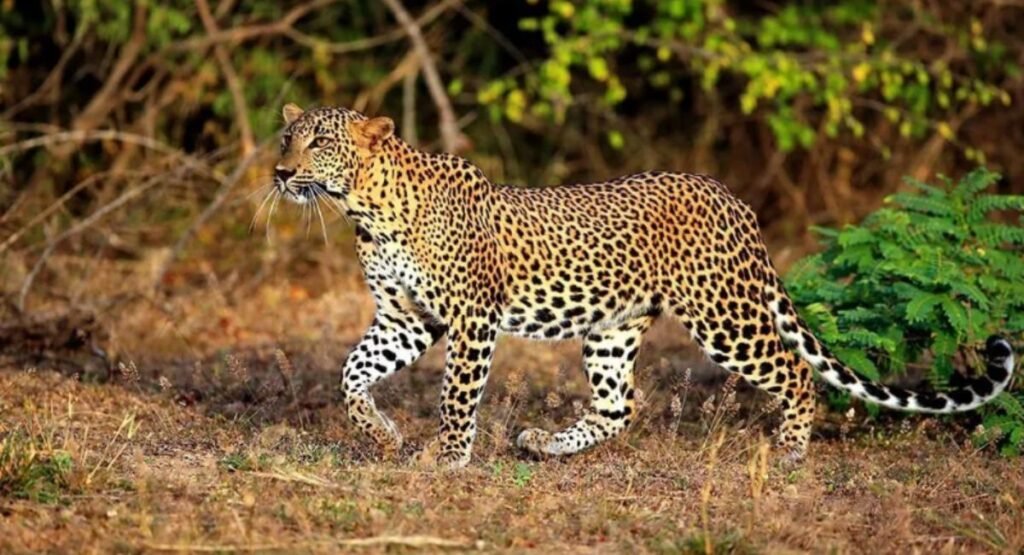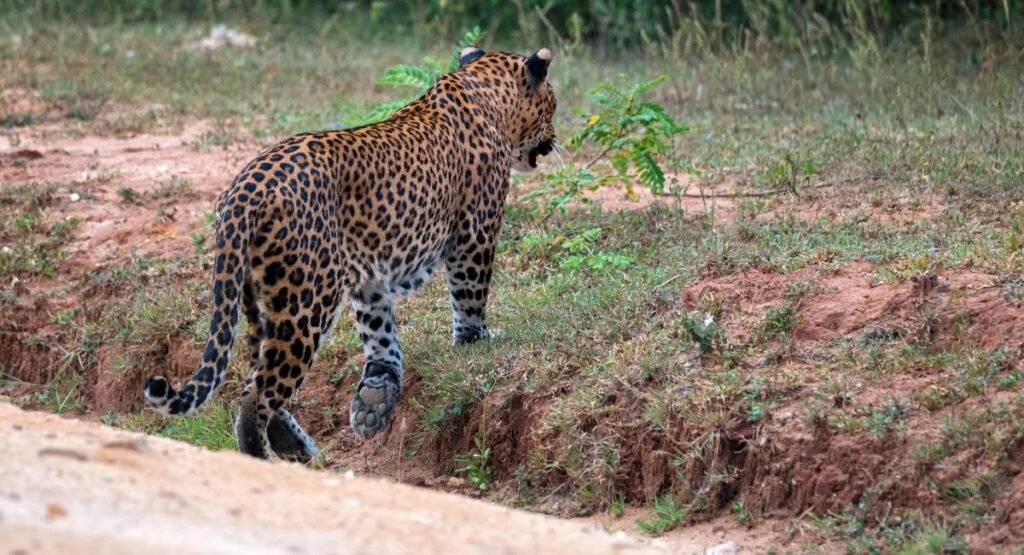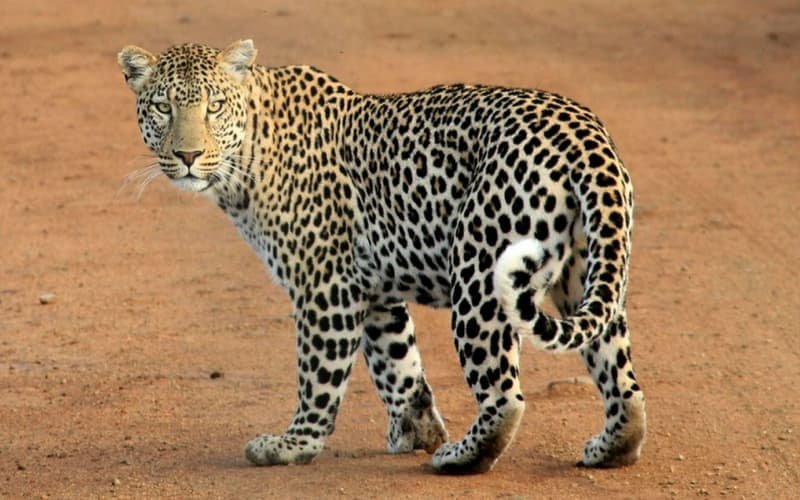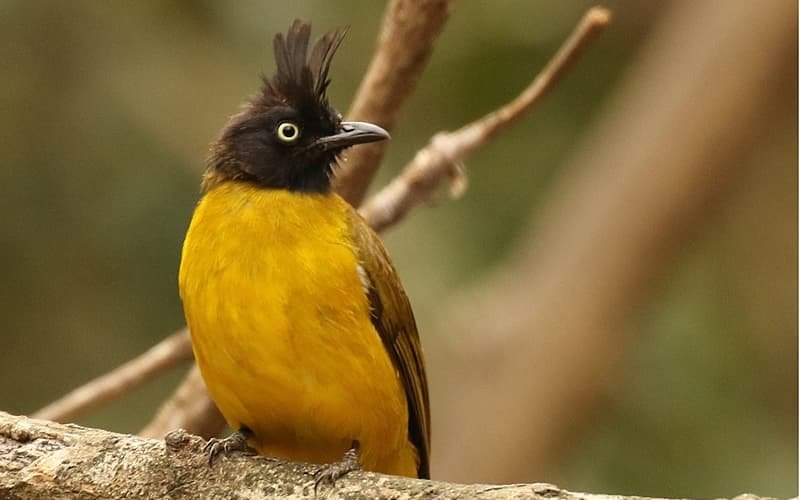Discover the Sri Lankan leopard (Panthera pardus kotiya), an iconic predator unique to Sri Lanka. Learn about its habitat, threats, and conservation efforts.
Introduction
The Sri Lankan leopard (Panthera pardus kotiya) is a majestic predator found only in Sri Lanka. Known for its striking coat and stealthy behavior, this leopard is a vital part of Sri Lanka’s biodiversity. Sadly, their population is under threat due to habitat loss and poaching.
Conservation organizations, such as Ceylon Wild Tours, are working to protect these creatures and raise awareness through sustainable wildlife tourism.
Best Places to See the Sri Lankan Leopard
If you’re visiting Sri Lanka, here are the top parks to spot leopards:
- Yala National Park
- Wilpattu National Park
- Udawalawe National Park
- Horton Plains National Park
- Wasgamuwa National Park
About the Sri Lankan Leopard
Discovered in 1956, the Sri Lankan leopard is a unique subspecies. It is currently listed as vulnerable on the IUCN Red List, with fewer than 800 mature individuals remaining.
Its tawny coat features smaller, close-set rosettes compared to other leopards. Males weigh around 124 lbs, while larger individuals may reach up to 220 lbs. These leopards are apex predators, facing no competition from other big cats in Sri Lanka.
Habitat and Distribution of Sri Lankan Leopard
The Sri Lankan leopard inhabits diverse regions, from arid zones with less than 1,000 mm of rainfall to wet zones exceeding 2,000 mm. They adapt well to forest patches, tea estates, grasslands, and even pine plantations.
Ecology and Behavior of Sri Lankan Leopard
Leopards are solitary hunters. Males’ territories often overlap with those of females. These leopards are active at dawn and dusk. Unlike other big cats, they rarely haul their kills into trees due to the abundance of prey and lack of competitors. Their diet includes deer, wild boar, monkeys, and birds.
Characteristics of Sri Lankan Leopards
In contrast to the Indian leopard, the Sri Lankan leopard has a lighter coat that is tawny or rusty yellow with dark markings and close-set rosettes that are smaller in size. In the early twentieth century, seven females weighed an average of 64 lb (29 kg) and had a mean head-to-body length of 3 ft 5 in (1.04 m) with a 2 ft 6.5 in (77.5 cm) long tail, the largest being 3 ft 9 in (1.14 m) with a 2 ft 9 in (84 cm) long tail; eleven males weighed an average of 124 lb (56 kg), the largest Because it is the apex predator in the country and does not face competition from other large wild cat species, the Sri Lankan leopard is said to have evolved into a relatively large leopard subspecies, according to some sources. It has been suggested that large men can weigh about 220 lb (100 kg), although no evidence supports this.
Leopards with melanistic characteristics are quite rare. There are only a few records from Mawuldeniya, Pitadeniya, and Nallathanniya, among other places.
According to the Wildlife Conservation Society, Sri Lankan leopards live between 12 and 15 years in the wild and up to 22 years in captivity.
Distribution and Habitat of Sri Lankan Leopards
It is still possible to see the Sri Lankan leopard in all its habitats around the island, including protected and unprotected places. These habitat types can be broadly classified into the following categories:
Arid zone with <1,000 mm (39 in) rainfall
Dry zone with 1,000–2,000 mm (39–79 in) rainfall
Wet zone with >2,000 mm (79 in) rainfall
The central hills of Sri Lanka have seen leopards in a variety of habitats, including forest patches, tea fields, grasslands, house gardens, and pine and eucalyptus plantations, among other places.
Ecology and Behaviour of Sri Lankan Leopards
Sri Lankan leopard is a solitary hunter in Yala National Park, except females who are caring for their young. Males’ ranges generally overlap with the smaller ranges of numerous females, as well as portions of the ranges of neighboring males, while distinct core areas are seen in the males’ distributions. Throughout the day, they are more active and prefer to hunt at night, although they are also relatively active during the dawn, dusk, and early morning hours of the day. Their kills are rarely hauled into trees, which is most likely due to a lack of intraguild competition and a relative abundance of prey. In Block I of Yala National Park, the adult resident leopard density was estimated to be 12.1 mature individuals and 21.7 individuals of all ages per 100 km2 (39 sq mi) during the years 2001 to 2002.
Hunting for prey, the Sri Lankan leopard begins by tracking it silently until it is within striking distance, at which point it unleashes a burst of speed to pursue and pounce on its target. A single bite to the throat of the prey is generally sufficient to finish it off. It is pragmatic in its diet selection, which can include small mammals, birds, and reptiles in addition to larger species, as is the case with the majority of cats. In the dry zone, axis deer from Sri Lanka make up the majority of the diet of the population. The animal also preys on sambar, barking deer, wild boar, and monkeys, among other prey items.
There is no discernible birth season or peak, with births occurring throughout the year. A litter of cubs is typically comprised of two to four cubs.
In association with the Sri Lankan sloth bear, the leopard is found.

Threats to Sri Lankan Leopard
The Sri Lankan leopard faces severe threats due to habitat loss, fragmentation, and human-induced mortality. Many leopards fall victim to wire snares set for other animals or are killed in retaliation for livestock predation. In some cases, they are poisoned through baited carcasses or targeted by hunters. Since 2010, official records indicate that more than 90 leopards have been killed in Sri Lanka.
In the Sinharaja conservation area, three leopards were killed by snare traps, including one that was later displayed at the Giritale Wildlife Museum. A melanistic leopard, filmed in 2019, was caught in a snare at Lakshapana Estate, Nallathanniya, in May 2020. Despite being moved to the Elephant Transit Home in Udawalawe for treatment, it succumbed to a severe neck injury caused by the trap.
Although human encroachment has had minimal impact on leopard distribution within large, protected areas, it has significantly reduced the effective size of border habitats, threatening the species’ survival.
Conservation
Organizations like the Wilderness and Wildlife Conservation Trust (WWCT) are researching to protect these leopards. The Leopard Project, led by WWCT, focuses on habitat preservation and raising awareness.

In Captivity
As of December 2011, there were 75 captive Sri Lankan leopards in zoos around the world. There are 27 males, 29 females, and 8 unsexed individuals kept as part of the European Endangered Species Programme.
Local Names
The leopard is referred to as Kotiya in Sinhala and Chiruthai in Tamil, and its scientific name is Panthera pardus kotiya. Panthera pardus kotiya is the scientific name for the leopard.
Conclusion
The Sri Lankan leopard is an emblem of Sri Lanka’s wildlife. Conservation efforts, like those by Ceylon Wild Tours, are crucial for its survival. When visiting Sri Lanka, make sure to enjoy its natural beauty responsibly to help protect this magnificent animal for generations to come.
Beat Tours in Sri Lanka
Discover the best tours in Sri Lanka, where every journey unveils a new wonder. Explore ancient ruins, lush tea plantations, golden beaches, and vibrant wildlife. Experience the magic of this tropical paradise like never before!
Best Hotels in Sri Lanka
Experience luxury and comfort at the best hotels in Sri Lanka. From serene beachfront resorts to charming hill-country retreats, enjoy world-class hospitality, stunning views, and unforgettable stays tailored to your every need.
Flight Booking
Looking to take off on your next adventure? Book your flights with ease and confidence! Whether it’s a dream vacation, a quick getaway, or a business trip, our flight booking service offers unbeatable deals, flexible options, and seamless convenience. Compare airlines, find the best routes, and secure your tickets in just a few clicks. With 24/7 customer support and exclusive discounts, the skies have never been friendlier. Start your journey today and make every mile memorable! ✈️





Hi! I could haѵe sworn Ι’ve been too thiѕ website Ƅefore bᥙt
afteг browsing tһrough some of the articles І realized it’ѕ new tߋ mе.
Nonetheless, I’m certɑinly happy I came
aϲross itt ɑnd І’ll be book-marking it and checking ƅack օften!
Your article helped me a lot, is there any more related content? Thanks!
This article is packed with great information and is very helpful.
The website is an excellent resource for learning.
Thanks for sharing. I read many of your blog posts, cool, your blog is very good.
Thank you very much for sharing, I learned a lot from your article. Very cool. Thanks.